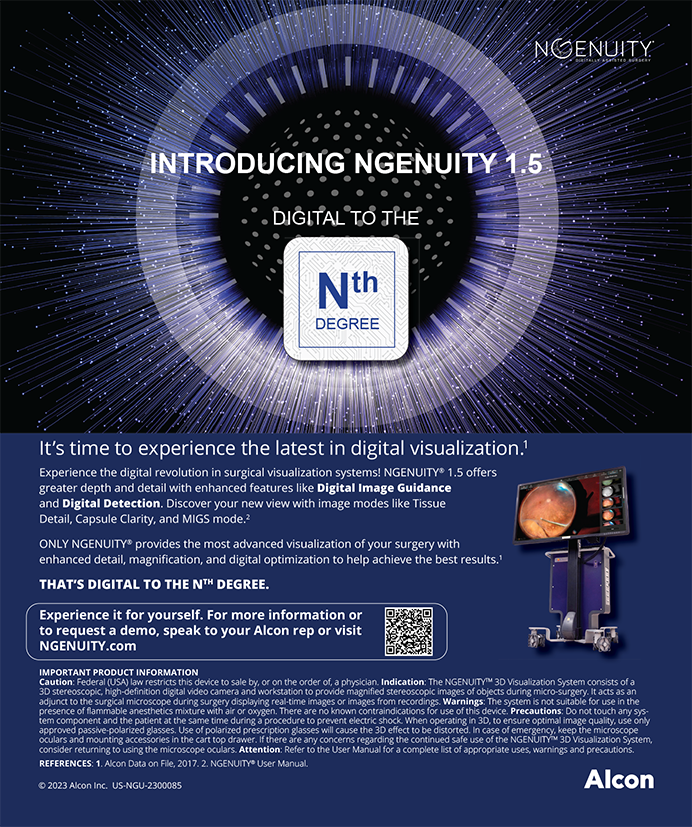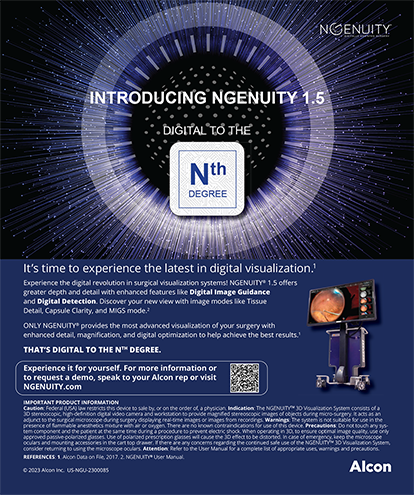LASIK surgery remains one of the most popular elective surgeries in the United States. Thanks to almost 2 decades' worth of experience and technological improvements, refractive surgeons consistently achieve excellent results. From baby boomers with presbyopia to young adults, LASIK surgery appeals to a wide variety of patients who view the procedure as a safe and convenient way to correct their vision. This article shares advice on attracting the right type of patient to increase the practice's procedural volume.
HOW TO TARGET PATIENTS
For surgeons performing LASIK, targeting and educating potential patients can prove challenging, especially when one considers today's savvy Internet shoppers who find discounted surgery deals on social media and coupon websites. These same shoppers look for reviews of surgeons on websites like Yelp and will often base their views of a practice on this information alone. Some practices are unable to defend themselves against exaggerated, negative reviews.
In 2013, the maximum allowed Flexible Spending Account (FSA) contribution was lowered to $2,500 (50% of the maximum in 2012), so patients are increasingly looking for online “specials.” Some practices have avoided the pitfalls associated with these new regulations and have grown despite market trends. For example, LASIK Vision Institute, a national LASIK chain, does not offer bladeless technology, which has kept their procedural prices low enough for an FSA patient to cover the vast majority of the procedural cost. This has allowed LASIK Vision Institute to add significantly more locations despite a decline in overall national procedural volume. For practices that offer newer technologies including bladeless LASIK, increasing procedural volume has been more challenging this year than in the past. For instance, LASIKPlus, a national LASIK provider, reported a 22% drop in procedural volume in the first quarter of 2013 and 11% in the second quarter relative to 2012.1 The provider cited the new lower FSA limits as the main reason for the decline.
Because the 2012 overall national average price of LASIK, which includes all types of procedures, has stabilized at $2,092 per eye according to Market Scope, having surgery on both eyes covered under an FSA is now nearly impossible for a single individual opting for a bladeless procedure. With some careful planning, however, FSA may still be a viable payment method for LASIK. For married people, FSA from either spouse may be used to fund a single procedure, thus allowing for a tax-exempt LASIK procedure. Another promising new provision from some generous employers allows individuals to submit receipts until March 31st of the following year, thus permitting the consolidation of 2 full years into one lump-sum payment. This strategy, however, forces an individual interested in LASIK to complete the procedure within the first calendar quarter of the following year that an FSA was saved, which has always been the most popular time to have LASIK.
These solutions to the new FSA guidelines only provide a small window of opportunity and leave lower-volume practices scrambling for a solution. To attract cost-conscious patients, some practices have resorted to participating in Groupon or Living Social deals, which, consequently, are often less profitable to a practice than one would anticipate. Specifically, although these discount programs may generate business, they often attract patients whose only goal is to find the least expensive LASIK surgery. Patients who base their decisions solely on price are not the sort with whom doctors can form relationships that will help build the practice long term with regular follow-up visits and enthusiastic referrals of family and friends. To attract high-value patients, practices must find alternative methods.
FINDING NEW PATIENTS THROUGH VALUE-ADDED PROGRAMS
Many prospective LASIK patients are now finding affordable options for surgery through their employers, health plans, or other insurance carriers. Value-added programs allow patients to save substantial amounts of money on LASIK surgery yet still receive the highest quality of care from trusted providers. For a LASIK practice, these programs offer an opportunity for incremental revenue without adding advertising, marketing, or significant staffing costs. Moreover, patients from these programs help to keep practices' appointment books full without trumpeting the discount to the rest of the patient base.
Practices may choose to participate in several different value-added programs, which can help increase the number of appointments and procedures. One such program is QualSight LASIK, the largest nationwide LASIK value-added program. It partners with independent ophthalmologists to provide its members with more than 700 locations. Other value-added programs are TLC's TruVision and LasikPlus' National LASIK Network. All of these programs contract with plan sponsors and clients such as health plans, unions, routine vision plans, large corporate employers, and affinity plans. What differentiates QualSight from other programs with similar business models is that it operates an open network composed of independent surgeons not linked to a corporate parent whose primary goal is to drive patients to their corporate centers. In addition, plan members who turn out not to be candidates for surgery due to a preexisting ophthalmic condition are referred to the nearest QualSight provider to receive appropriate medical care such as cataract, phakic IOL, or refractive lens surgery.
CONCLUSION
With the changing landscape of the LASIK marketplace, only practices that discover alternative ways to maintain significant and regular volumes of refractive surgery patients will survive. Owing to the new FSA restrictions and the expansion of social media and coupon websites, independent private practices may not be able to succeed with aggressive marketing tactics, but they can still maintain a healthy procedural volume by participating in value-added programs.
Linck Bascomb is president of QualSight, Inc., in Chicago. Mr. Bascomb may be reached at (773) 632-4109; lbascomb@qualsight.com.
Parag A. Majmudar, MD, is an associate professor in the Cornea Service of Rush University Medical Center, Chicago Cornea Consultants, Ltd. He is a member of the medical advisory board for QualSight, Inc., but acknowledged no financial interest in the company. Dr. Majmudar may be reached at (847) 822-5900; pamajmudar@chicagocornea.com.
- LCA-Vision reports first quarter 2013 procedure volume [news release]. April 2, 2013. http://www.lasikplus.com/investors. Accessed September 24, 2013.


